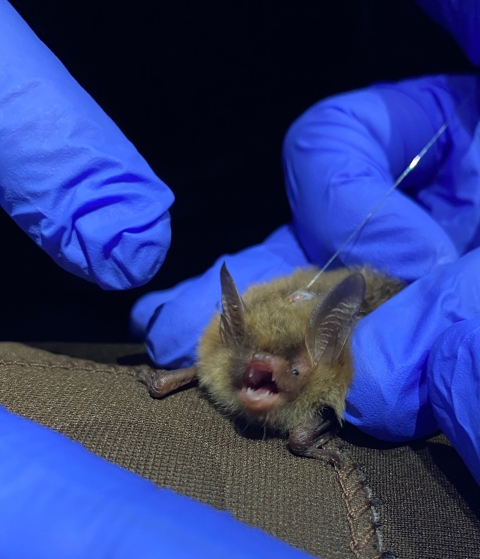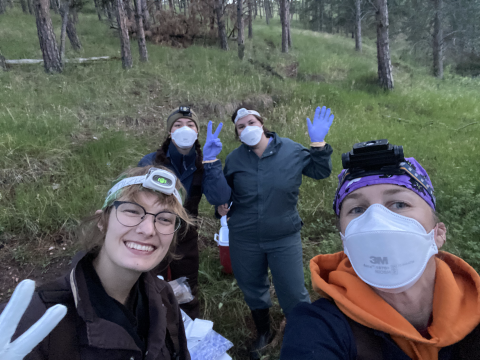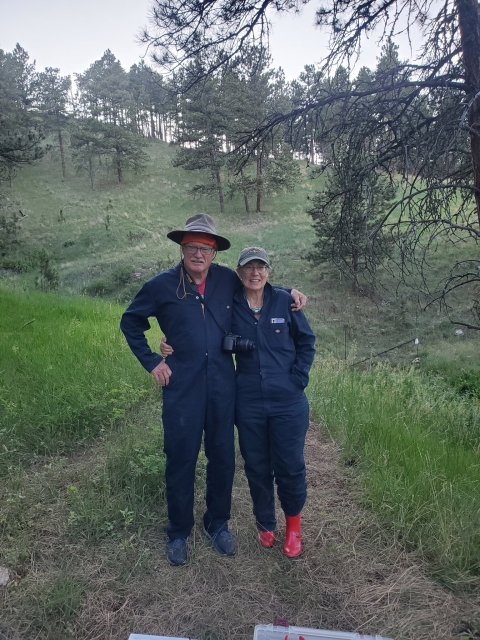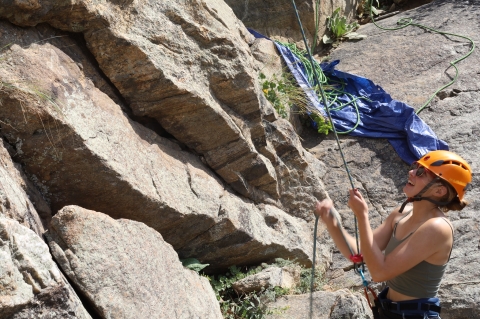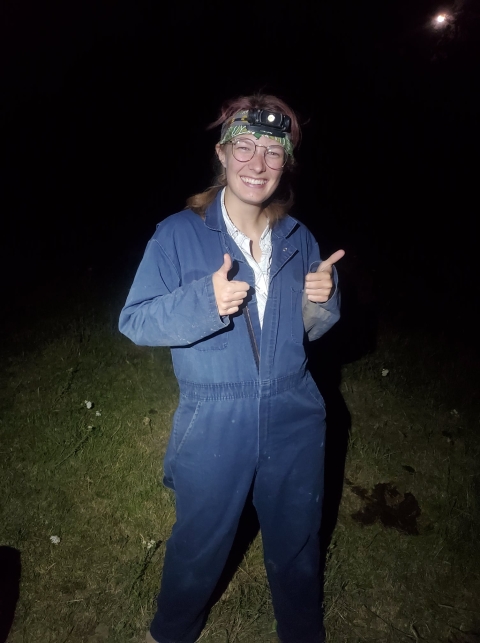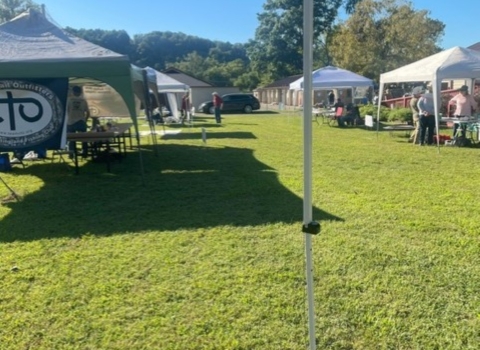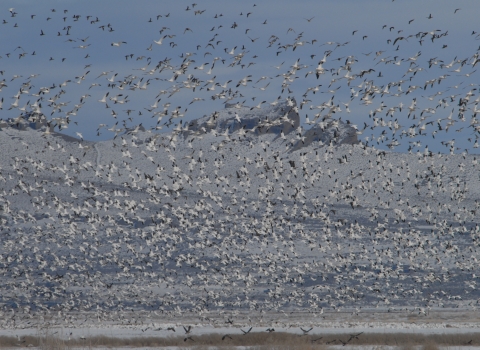It’s 8 p.m., and while most people have eaten dinner and are winding down, getting ready for bed, graduate students who study bats are just starting their workdays. During most of the summer, instead of resting, grabbing drinks or studying at night, the students and their technicians become nocturnal like the bats they’re hoping to catch in their mist nets.
Renee Lile, doctoral student in the Bernard Research Lab at the University of Wyoming, enjoys working with rare species, making conservation more inclusive and accessible, and helping land managers make informed decisions to conserve endangered bat species. She likes interacting with animals that people have to go out of their way to see.
“Most people don’t see bats,” Lile said, “and when they do, it’s as a blur in the distance. They don’t get to see how cute they are.”
Lile’s research supports efforts by many partners, including the U.S. Fish and Wildlife Service, to conserve vulnerable, threatened, and endangered bat species, especially as a deadly disease, white-nose syndrome, spreads across North America’s bat populations. The Service coordinates the White-nose Syndrome Response Team that includes biologists, researchers, land managers, communicators and naturalists from federal and state agencies, universities, and non-governmental organizations to conserve and strengthen healthy bat populations.
She studies maternity-habitat preferences of the endangered northern long-eared bat (Myotis septentrionalis), changes in population dynamics of western bat species when the deadly bat disease white-nose syndrome is present, and the role parasites play in bat fitness. The National Park Service funds her research in the Black Hills of South Dakota, within Wind Cave National Park, Mount Rushmore National Monument and Jewel Cave National Monument.
As a doctoral student, Lile is encouraged to know her fieldwork and collected data will become useful tools when applied by land managers within the NPS. “I like knowing that my research will be used to update and create forest conservation management plans that will help protect bats in the West. Knowing that real people will use my data to better bats in the Black Hills makes the long nights of netting, exposure to poison ivy and mosquito bites all worth it!”
Lile is in the second year of her doctoral program. Although her academic and research journeys are just beginning, she appreciates her peers, parents and mentors. “My friends and lab mates are wonderful; they provide kind words and support. I can’t imagine working in a lab or research environment where people didn’t truly enjoy scientific collaboration. Basically, everyone I’ve met — my advisors, technicians, student peers — have been willing to extend me a helping hand on my graduate research journey.”
A product of two naturalists, Lile is no stranger to the field of ecology. She’s grateful for the encouragement her parents provide. “The conservation biology field is different than a normal 9-5. It requires a lot of moving around and seasonal work, and my parents have shown amazing excitement and support for all my seasonal positions. They were also incredibly excited to hear I applied to graduate school to work with bats! They even came out to help net; it was great!”
Lile is the first in her immediate family to pursue a graduate degree. She is advised by Riley Bernard, assistant professor in the Department of Zoology and Physiology and Ian Abernathy, Vertebrate Zoology program manager, at the University of Wyoming. Bernad has become her mentor, guiding her through the graduate school requirements.
“She has provided personal empathy and helped keep me positive and hopeful in the field,” said Lile. Lile, who proudly works on a team with several other women, is delighted to teach and mentor women her age and help the next generation of biologists frame their careers.
Outside of research, Lile enthusiastically encourages others to learn about bats and take steps to conserve them. “Bats are incredibly unique and provide many benefits,” she told me. “There’s always something that we can thank a bat for! They work overtime managing pests, dispersing native seeds, and pollinating plants like mangos, saguaro cacti and agave!”
Many millions of bats have died across North America due to WNS, caused by a fungal pathogen (Pseudogymnoascans destrucans), which can be transported on caving and rock-climbing gear. As a member of the rock-climbing community, she encourages climbers to decontaminate their gear, report bat roosts found while climbing, and share their love for bats.
“If you want to do something to help bats, and the environment in the Intermountain West, the best thing you can do is decontaminate your gear before and after a climbing trip, to prevent the spread of white-nose syndrome,” said Lile. "Together, we can slow the spread of this disease and mitigate bat exposure by deconning our gear. It only takes a few minutes!”
When she’s completed her degree, Lile hopes to continue conducting bat-related research and conserving bats in the Intermountain West.
“I want to make sure bats in Colorado are safe and taken care of,” she said. Bats in North America are increasingly threatened by disease, habitat loss, and changing environmental conditions, they need our help more than ever. We can all help bats by learning about species in in our backyards and communities, respecting their habitat, and taking care to decontaminate our gear when entering caves and mines.
Learn about white-nose syndrome and how you can help bats in your area!
Climbers for Bat Conservation is a citizen-science project that helps researchers track bat roosts across the West.

